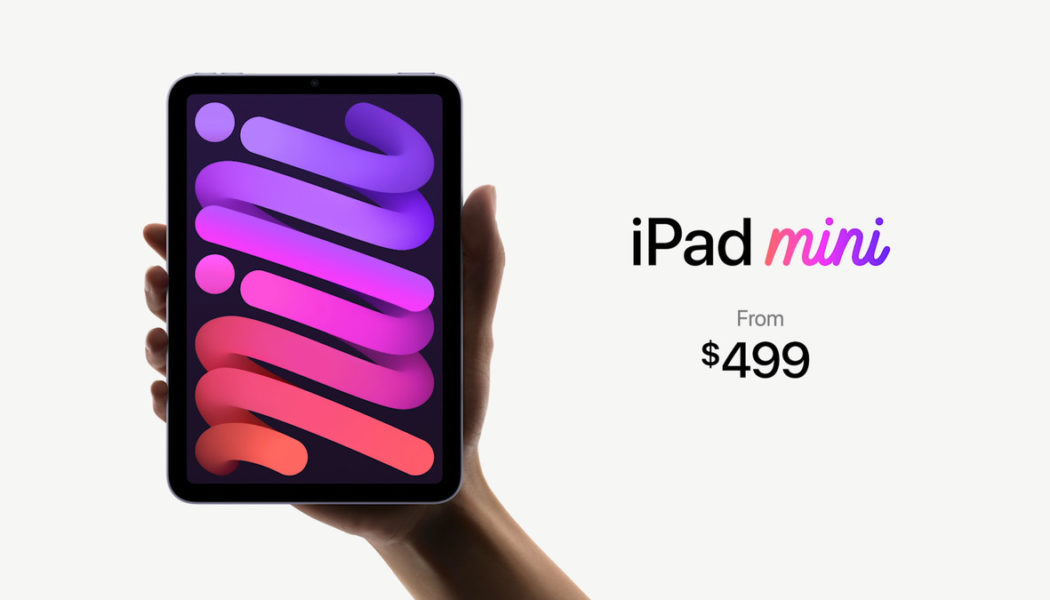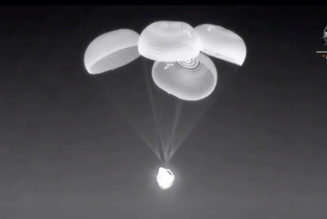With the announcement and impending release of the new iPad Mini and its revamped design, it might be all too easy to stan the new model and completely write off its predecessor. While the new model has a lot to offer — namely a larger screen, faster processor, refined design akin to the 2020 iPad Air, and a USB-C port — it also has a quality that is not so desirable: a higher introductory price.
The iPad Mini line has been notoriously discount-immune over the years, possibly because of its specialized position in the market and lack of competition. The outgoing iPad Mini only recently started receiving significant discounts, falling to $300 soon before the new model was announced, but it started at $399 from the get-go. The new iPad Mini starts at $499 before you add anything further, like extra storage or 5G connectivity.
So let’s go over what makes the new iPad Mini different, and if it merits the $200 price premium over its two-year-old predecessor.
:no_upscale()/cdn.vox-cdn.com/uploads/chorus_asset/file/22850130/apple_event_2021_1046.png)
What’s improved on the 2021 iPad Mini?
- The new iPad Mini has a bigger screen in a slightly smaller physical footprint
- Apple’s A15 Bionic processor replaces the aging A12 Bionic from 2018
- The front camera has more resolution and supports Center Stage to zoom in and keep you centered during video calls
- The rear camera is higher resolution and can now record 4K video
- USB-C all the things! (except iPhones, sadly)
- No more Apple Pencil sticking out of the port to charge: second-gen Apple Pencil neatly attaches to the side to charge magnetically
- Wi-Fi 6 compatibility
- 5G connection on cellular models for potentially faster speeds than LTE, though lacking mmWave 5G radio bands
The showstopper for the new iPad Mini is its screen, now an 8.3-inch display. It may not sound like a massive difference compared to the 7.9-inch display on the 2019 model, but the new tablet is actually a touch shorter while squeezing in a larger screen. More screen real estate and smaller bezels in nearly the same footprint is generally a good thing that makes everyone happy.
As for processing power, the new iPad Mini features the same brand-new A15 Bionic chip you’ll find in the iPhone 13 lineup, with five GPU cores like the iPhone 13 Pro and Pro Max. (That’s one more than the iPhone 13 and 13 Mini.) Apple claims the new chip gives the Mini a maxi performance boost, with 40 percent CPU gains and 80 percent GPU gains over the older A12 Bionic in the outgoing model. There’s talk of it not being clocked quite as fast as the A15 processor of the iPhone 13, but that remains to be confirmed and the improvements over the previous iPad Mini are likely noticeable.
A 12MP ultrawide front camera replaces the 7MP selfie cam from 2019. More resolution on the front camera may not sound like the most important thing in the world, but the big appeal should be that the new iPad Mini supports Center Stage for keeping you centered during video calls. The quality has also been improved — while still 1080p, it has improved dynamic range with more frame rate options for video and Smart HDR 3 for photos.
As for the rear camera, there are similar resolution and recording gains with a 12MP sensor and brighter f/1.8 aperture, replacing the prior 8MP @ f/2.4. The faster aperture should be helpful in low light, and for when it’s way too dark there’s now a quad-LED True Tone flash where the 2019 model had no flash at all. On the video side, the new model is the first in the iPad Mini line to offer 4K video recording at up to 60fps.
:no_upscale()/cdn.vox-cdn.com/uploads/chorus_asset/file/22850183/lcimg_90987419_14bd_47ba_b425_5984e2255904.jpg)
The latest iPad Mini now aligns with the iPad Pros and 2020 iPad Air by replacing the Lightning connector with USB-C. Apple spoke extensively of the flexibility that USB-C brings to the iPad Mini, even though for some reason the new iPhone doesn’t receive the same treatment. This offers more versatility for charging and connecting devices, such as full-size cameras or game controllers. You also get the faster 20-watt USB-C charger in the box, while even a $1,600 iPhone 13 Pro Max does not come with a charging brick at all.
:no_upscale()/cdn.vox-cdn.com/uploads/chorus_asset/file/13358115/Apple_Pencil_Bad_Design.0.jpg)
The iPad Mini line became compatible with the first-gen Apple Pencil in 2019, awkward charging method and all. With the new iPad Mini, you don’t need to leave it sticking out the side: it supports the newer second-gen Pencil, which can wirelessly charge while it magnetically docks to the tablet’s side rail. It’s a much more slick and seamless way of getting more functionality out of this little tablet. If you also want to add a keyboard to the mix, there are wireless Bluetooth options.
Lastly, the cellular-equipped configurations of the new iPad Mini are 5G-compatible where the predecessor only has LTE. As for if 5G truly gets you faster speeds, well, you know the drill. But whether you achieve those faster speeds or not, having a mobile connection on such a portable device is convenient. A 5G iPad Mini (2021) will run you an additional $150, pushing the price to $649 (before carrier fees). Ouch. At least all 2021 iPad Mini configurations have Wi-Fi 6, allowing for faster speeds at home.
What’s the same on both models?
- While the new screen is larger, it has the same number of pixels per inch
- Both screens are laminated to minimize the gap between cover glass and screen
- Maximum brightness of 500 nits for both panels
- Touch ID fingerprint sensors are present on both – just in different locations
- Apple quotes the same battery life for both
- Storage capacity still starts at 64GB
- Weight is practically identical (within 8 grams)
- Both run iPadOS 15
As I mentioned earlier, the screen is the standout of the new model, but you should keep in mind that the pixel density is the same on both. The 2021 iPad Mini has a resolution of 2266 x 1488 and the 2019 iPad Mini has a 2048 x 1536 panel, which both translate to 326 ppi. So both screens should look equally sharp, though the 2021 model is giving you more screen real estate. Also, both screens are laminated, unlike the base-model iPad, so the pixels should look like they come right up to the cover glass.
Another similarity is storage capacity. The new and old models both start with 64GB of storage and can be outfitted with 256GB for an additional $150. This might be a disappointment for some, especially given the iPhone 13 models doubled their base storage to 128GB this year, though. You may want to do some personal bookkeeping and see how much storage you currently use before paying extra.
:no_upscale()/cdn.vox-cdn.com/uploads/chorus_asset/file/22850355/Apple_iPad_mini_touch_id_09142021_big_carousel.jpg.large_2x.jpg)
What about software, though? Well, there’s not a whole lot to say. The new iPad Mini will ship with iPadOS 15, and the 2019 model will be eligible to upgrade on September 20th. The only main difference between the two tablets is the new model’s reliance on more gesture-based controls, due to its removal of the home button that is still present on the 2019 model. Since the new model ditched the home button, its Touch ID fingerprint sensor is built into the sleep/power button on the top — which is also where the volume buttons are located.
:no_upscale()/cdn.vox-cdn.com/uploads/chorus_asset/file/15974614/akrales_190318_3298_0088.jpg)
Why might you stick with the 2019 iPad Mini?
- Price: the older iPad Mini is currently on sale for $200 less than the new model
- It’s still a fine tablet even today, with more years of updates to come
- It has a headphone jack!
- Classic home button operation for those who prefer it
The outgoing iPad Mini still has more than a few great things going for it. It has a 3.5mm headphone jack, which is frankly depressing to lose on the new model. All tablets — even mini ones — should have enough room for a headphone jack, but that’s a rant for another time. The 2019 iPad Mini also has the classic physical home button on its front, complete with Touch ID. The gesture controls of newer Apple products may not be for everyone, and there are still many who love the clicky home button. There’s no shame in picking up a 2019 iPad Mini in the year 2021 because you value these things.
After all that, there’s the consideration of pricing. Slightly aged tech always has the added benefit of discounted prices before they’re no longer available. With the jump in price of the new iPad Mini, a $200 price delta is nothing to balk at. The 2021 iPad Mini has priced itself nearly into 2020 iPad Air territory, and there are good arguments to be made for why you should maybe consider the Air instead.
But if you’re in the market for a small tablet, the choice is primarily between these old and new iPad Minis. Like I mentioned, there’s not much competition in this space, which is why discounts have not always been common. The outgoing model should still have years of updates in store for it, and there’s a wide ecosystem of compatible accessories — most likely also with cheaper prices attached to them. We’ll have a full review of the iPad Mini in the weeks to come, and we’ll see if its new features justify the higher price.

/cdn.vox-cdn.com/uploads/chorus_asset/file/22850090/lcimg_7b04f92e_6e3b_4b04_83c7_9381b0d97513.jpg)
/cdn.vox-cdn.com/uploads/chorus_asset/file/15974627/akrales_190318_3298_0042.jpg)







